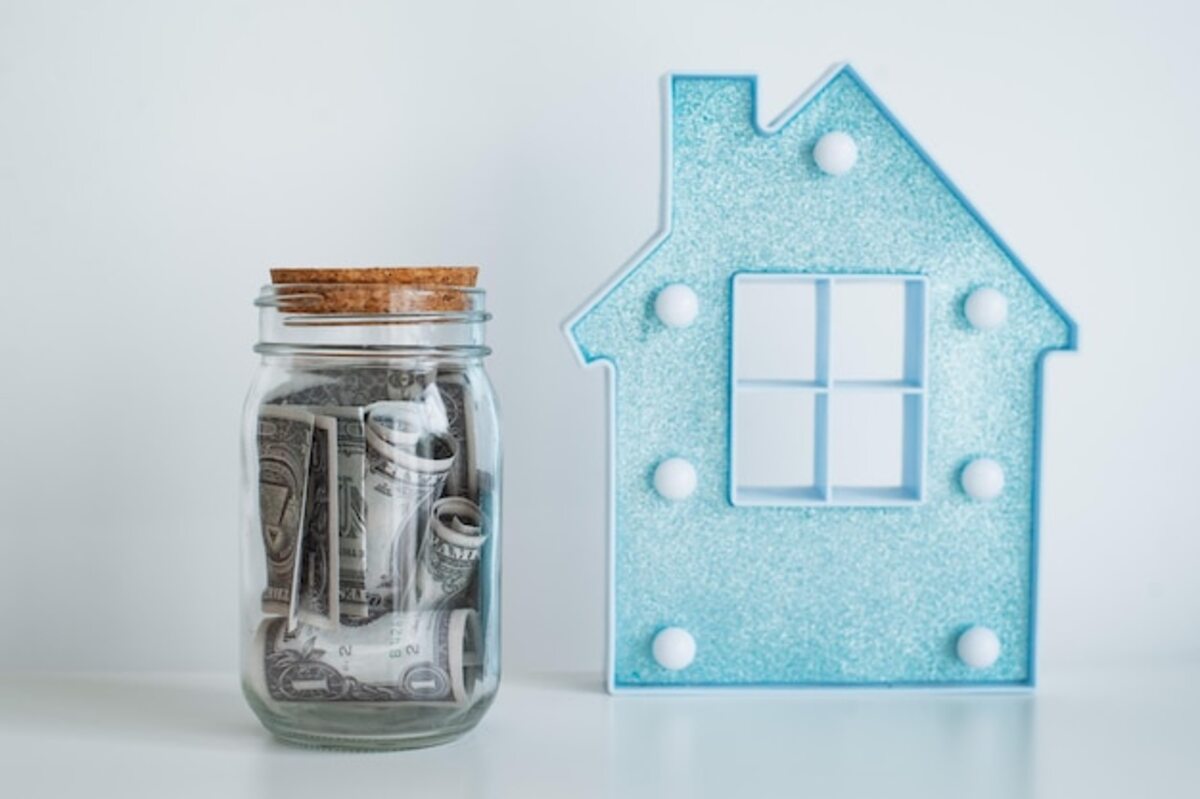Savings strategies that will transform your future home

Do you want to transform your future home without sacrificing your current lifestyle? Savings strategies are the key to achieving that dream home you have always desired. In this article, you will discover how small changes in your financial habits can lead to significant savings and allow you to invest in that ideal space. Get ready to take control of your finances and take concrete steps towards a home that is not only a place to live but also a valuable investment for your future.
1. Establishing an effective budget: the foundation of saving for housing
Establishing an effective budget is the first fundamental step to transforming your housing dreams into a tangible reality. A well-structured budget allows you to visualize your income and expenses, identifying areas where you can reduce costs without compromising your quality of life. Start by listing all your monthly income and then break down your fixed and variable expenses. By doing so, you will be able to detect consumption patterns that you may not have considered, such as unnecessary subscriptions or excessive spending on leisure. This clarity will provide you with the necessary foundation to set a specific savings goal that aligns with your housing aspirations.
Once you have a clear picture of your finances, it is crucial to set realistic and achievable goals. Think about how much you need to save for the down payment on your future home and establish a timeline that allows you to reach that amount within a certain period. For example, if you decide to allocate a fixed percentage of your monthly salary to this fund, you will see how those small contributions add up quickly. Additionally, consider using digital tools or personal finance apps that make it easier to track your progress and keep you motivated on the path to acquiring that dream home. Remember that every small effort counts and brings you closer to realizing that ideal space where you will build lasting memories.
2. Identifying unnecessary expenses: how to find what you can eliminate
Identifying unnecessary expenses is a crucial step towards a more affordable and sustainable home. Start by reviewing your monthly statements and categorizing your expenses into essential and non-essential. Ask yourself: do I really need that subscription to multiple streaming services, or can I get by with just one? Often, small expenses like daily coffees or meals out can add up quickly. By gaining clarity on these superfluous costs, you can make informed decisions that will free up funds for more significant investments.
Once you have identified those unnecessary expenses, set a budget that prioritizes your real needs. Consider implementing the 30/70 rule: allocate 30% of your income to savings and 70% to your necessary expenses. This will not only help you reduce those unnecessary luxuries but also promote healthier financial habits. Remember that every small adjustment can add up to significant results over time; even eliminating a monthly expense can lead to substantial savings that you can redirect towards your dream future home.
3. The power of the 'emergency fund': securing your future investment
The emergency fund stands as a fundamental pillar in any savings strategy, especially when it comes to securing a future investment in your home. This fund acts as a financial cushion that allows you to face unforeseen circumstances without having to dip into your savings designated for the house or, worse yet, resort to debt. By establishing and maintaining an adequate emergency fund, you not only protect your ability to handle unexpected situations but also give yourself the freedom to continue investing in your future home without the constant fear of destabilizing your finances. Moreover, having an emergency fund provides you with greater mental and emotional peace. Knowing that you have resources available in case of emergencies allows you to focus better on your financial goals and save more effectively toward the purchase or improvement of your dream home. For example, if an unexpected repair arises or there is a temporary loss of income, you will be able to manage these challenges without compromising your plans to acquire that ideal space. Ultimately, the power of the emergency fund not only safeguards your money; it also empowers you to move forward toward the future you desire.
The creation and maintenance of this fund requires discipline and planning, but the benefits are invaluable. By allocating a specific portion of your monthly income to this savings designated exclusively for emergencies, you will start to build a solid foundation upon which you can realize your real estate dreams. Remember that this effort is what ensures that each step toward your new home is firm and secure, allowing you to enjoy the process without unnecessary worries.
4. Comparing financing options: choosing the best for you
When planning the purchase of your future home, it is essential to compare the different financing options available. Each alternative has its own characteristics, interest rates, and terms that can significantly influence the total cost of your home. Researching conventional mortgages, FHA or VA loans, as well as private financing options will allow you to find the solution that best fits your financial needs. Don't forget to consider aspects such as down payments and insurance, as these elements directly impact your ability to maintain a balanced budget.
Another crucial aspect in comparing financing options is analyzing the long-term cost versus the monthly payments. Sometimes, a low rate may seem attractive at first glance, but if the loan term is extended, you could end up paying much more in interest. For this reason, it is advisable to use mortgage calculators and consult with financial advisors to simulate different scenarios and make informed decisions. Choosing the right financing will not only make it easier for you to acquire your new home, but it will also help ensure that this investment comfortably fits your present and future lifestyle.
5. Automatic savings: making your finances work for you
Automatic saving is one of the most effective strategies to make your finances work in your favor without having to think too much about it. Setting up automatic transfers from your checking account to a savings account, whether weekly or monthly, will allow you to accumulate capital without feeling the immediate impact on your daily budget. This practice not only facilitates the creation of a fund for your future home, but also helps you develop the habit of saving. Thus, every time you receive an income, a portion will already be allocated to achieving your financial goals.
Additionally, consider taking advantage of digital applications and tools that facilitate this process. Many of them allow you to round up your purchases and deposit the difference into a specific savings account. For example, if you buy a coffee for $2.50, the app can round it up to $3 and automatically save those 50 cents. These small amounts may seem insignificant at first, but over time they accumulate and contribute significantly to achieving that dream of owning a home. Implementing automatic savings will not only simplify your financial life but also bring you closer each day to that much-desired investment in your future home.
6. Smart investments: increasing your long-term savings
Smart investments are a fundamental piece of the savings strategy that will allow you to transform your home into the space you have always desired. By allocating a portion of your savings to investment instruments, you will not only be protecting your capital against inflation, but you will also be able to generate passive income that adds to your finances. From high-yield savings accounts to indexed funds and real estate, there are various options that can fit your financial profile and long-term goals. The key is to research and choose those alternatives that offer a balance between risk and return, ensuring that every peso earned is contributing to building the future home you long for.
Additionally, it is important to adopt a disciplined approach to your investments. Establishing a clear and realistic plan will allow you to visualize how your savings grow over time. Consider contributing regularly to your investment fund, even if it’s small amounts; the essential thing is to maintain consistency. As you accumulate capital, you will have more opportunities to diversify your portfolio and explore new avenues to increase your wealth. Remember that investing is not just about money; it also involves educating yourself about market trends and learning to make informed decisions. Thus, each step you take on this path will become another brick in the construction of that ideal home where you want to live with style and financial security.
7. Tips on sustainable housing and its impact on savings
Sustainable housing is presented as an option that is not only ecological but also economical. By adopting construction and design practices that prioritize energy efficiency, such as the use of recycled materials or solar energy systems, you can significantly reduce your utility bills. These initial investments may seem high, but in the long run, the savings generated in electricity and heating costs more than offset the initial expense. Additionally, many cities offer tax incentives and subsidies for those who choose to build or remodel sustainable homes, which can further facilitate this transition to a more efficient home.
Another crucial aspect is water management in your home. Implementing rainwater harvesting systems or installing low-flow faucets and showers not only contributes to the conservation of this vital resource but also translates into significant savings on monthly bills. Reducing water consumption benefits not only your wallet but also decreases your home's ecological footprint. Reviewing and updating your appliances to energy-efficient models can be another essential step; although their initial cost may be higher, the long-term benefits are undeniable for both your finances and the environment. At the end of the day, every small change adds up and brings you one step closer to that ideal home you wish to build.
8. The importance of long-term planning: visualizing your ideal home
Long-term planning is a fundamental pillar on the path to creating your ideal home. Visualizing your goals and dreams will allow you to establish a clear direction that will guide your financial and saving decisions. By defining what type of housing you want, its characteristics, and the environment you desire, you will be better positioned to identify the appropriate strategies that align with those objectives. This clarity will help you prioritize your current expenses, avoiding impulsive purchases and redirecting those funds toward your future home.
In addition, long-term planning fosters an investment mindset. Instead of seeing your spending capacity as a limitation, you will transform it into an opportunity to build something meaningful. This involves not only saving money but also researching the real estate market, exploring different financing options, and considering how each decision can affect your long-term financial situation. With a well-defined vision and a solid plan, you will be better prepared to face the challenges that may arise on the path to your dream home, turning every effort into a firm step toward that desired reality.



